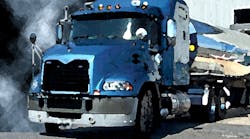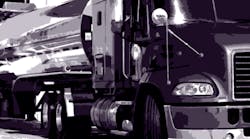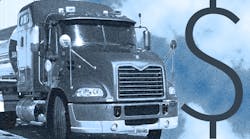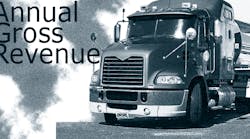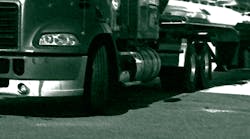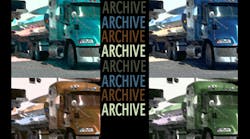Looking back over all that happened since the end of last year, it's hard to remember that 2008 was a relatively good year for most tank truck fleets. The US economy didn't plummet from a cliff for the tank truck industry as a whole until the last few weeks of the year.
Fleets that were dependent on the construction industry suffered in many parts of the country, but there were regional pockets of strong activity. Business remained steady for many fleets hauling fuels, edibles, and various chemicals.
Gross domestic product grew by about 1.5% in 2008, and the tank truck industry was one of the beneficiaries. Even though tank truck shipments peaked in March 2008, the industry outperformed the rest of trucking for the year overall, according to Bob Costello, American Trucking Associations chief economist.
Nearly 67% of the carriers participating in this year's >Bulk Transporter Annual Gross Revenue Report posted higher revenues. That was much better than the 60% of participating tank fleets in 2007. On the other hand, operating ratios improved for just 38% of the participants in this report.
The Top 10 tank truck carriers turned in financial results that mirrored the rest of the industry. All of them posted revenue increases from 2007 to 2008, but only two reported improved operating ratios.
Quality Distribution Inc maintained its grip on the top spot. However, Kenan Advantage Group Inc moved ahead of Trimac Transportation Inc. Rounding out the Top 10 were Ruan Transport Corp, Superior Bulk Logistics Inc, Groendyke Transport Inc, A&R Transport Inc, Schneider National Bulk Carriers Inc, Foodliner/Quest Liner Inc, and Enterprise Transportation Co.
Combined Top 10 revenues were $3.7 billion in 2008, a decent improvement over 2007 revenues of $3.2 billion. Top 10 revenues in 2008 accounted for 57.8% of the total in the report.
The Top 25 carriers had $5.2 billion in revenues, or 80.6% of the total represented in this report. That was a hefty increase over the $4.6 billion in revenues reported by the Top 25 in 2007.
Total 2008 revenues for all 66 tank truck carriers in this report were $6,474,576,103. In contrast, the 77 carriers in the 2007 report accounted for a combined total of $6,013,994,463.
Average revenue in 2008 was $98,099,637, up $7.3 million from the average of $90,721,917 in 2007. The average grew by $4.2 million from 2006 to 2007.
The median carrier on the list, the one with an equal number of carriers above and below it, had revenues of $54,000,000. In 2007, the median carrier revenue was $33,200,000.
Operating ratios for both 2008 and 2007 were supplied by 44 of the carriers in this report. Just 17 (a mere 38%) showed improvement over the previous year. The operating ratio represents operating expenses as a percentage of revenue.
For both 2008 and 2007, thirty-four fleets had operating ratios between 95.0% and 99.9%, and one had a ratio above 100%. Eighteen carriers, down one from the previous year, reported ratios between 90.0% and 94.9%.
Most of the fleets participating in the 2008 report submitted data used to calculate tractor revenues. These numbers give an indication of productivity levels. The average for 2008 was $219,092, a moderate increase over the $207,109 average in 2007.
Nine of the Top 10 reported tractor revenues, averaging $227,793. This was a substantial increase over the $198,331 average reported by the Top 10 in 2007.
The best productivity (tractor revenue of $465,644) came from a Northeast petroleum hauler. The lowest tractor revenue ($78,629) was posted by a foodgrade hauler.
Average revenue per tractor for a representative sample of 10 petroleum haulers was $247,852, down from the previous year's average of $270,491. The lowest tractor revenue posted by a petroleum fleet was $120,696.
Eight chemical haulers accounted for average revenue per tractor of $199,299, down from $203,795 in 2007. Chemical tractor revenue ranged from a high of $255,671 down to $131,463.
Average tractor revenue for five dry bulk specialists was $197,677, a healthy increase from a $173,082 average in 2007. Dry bulk tractor revenue ranged from a high of $261,333 to a low of $124,854.
Among four carriers that focus on transporting bulk liquid and dry foods, tractor revenue averaged $151,403, a decline from the 2007 average of $178,738. The high for the category was $178,466.
Many of the figures used here are from preaudited reports, and some may include nonbulk revenues or revenues from subsidiary tank truck carriers. In all cases, the numbers were supplied directly to Bulk Transporter. The staff greatly appreciates the cooperation of all who helped in the preparation of this report.
To view a chart with this year's ranking and revenues, use the "Related" link below to find it and all reports going back to 2001 in the Gross Revenue Reports Archive.

